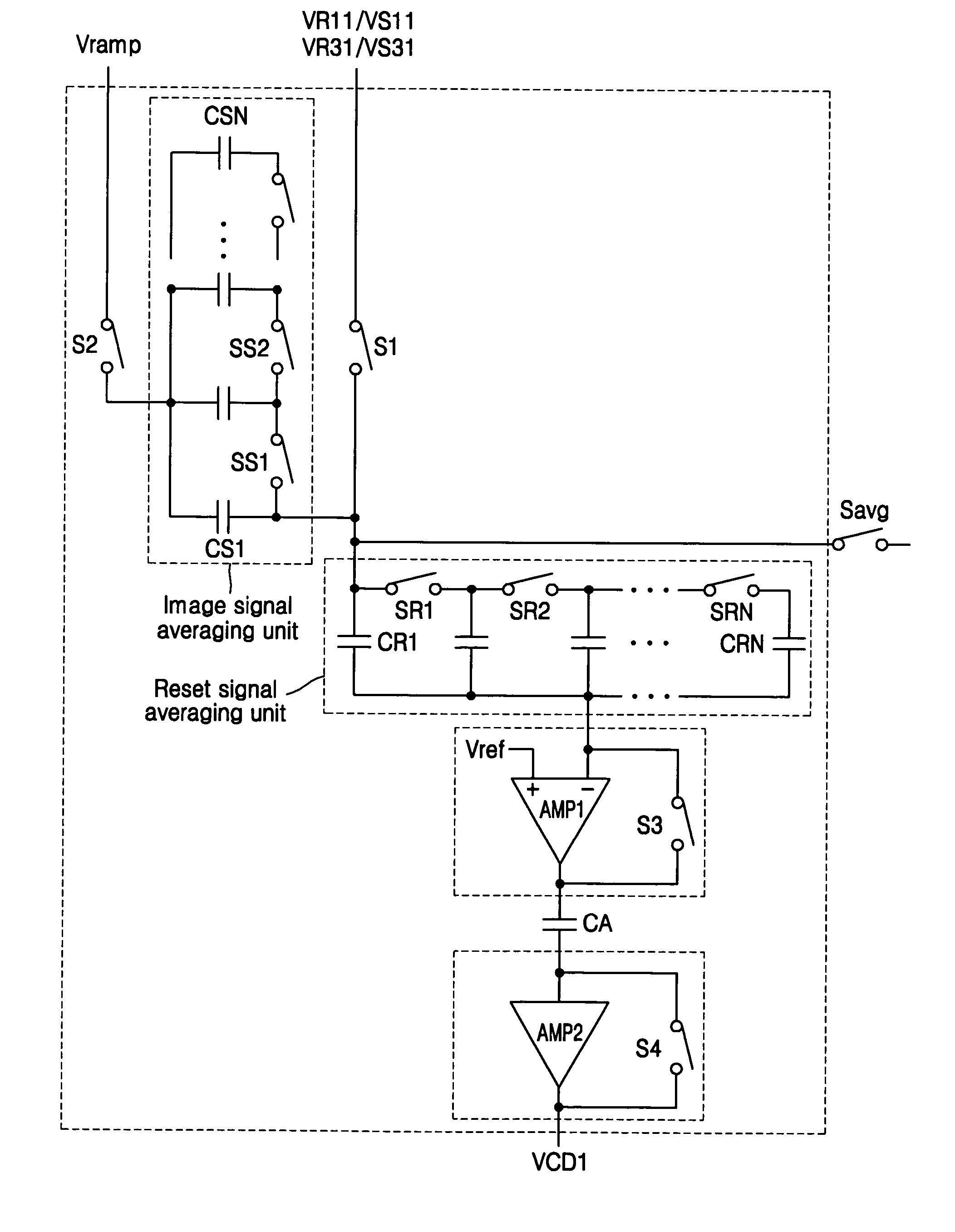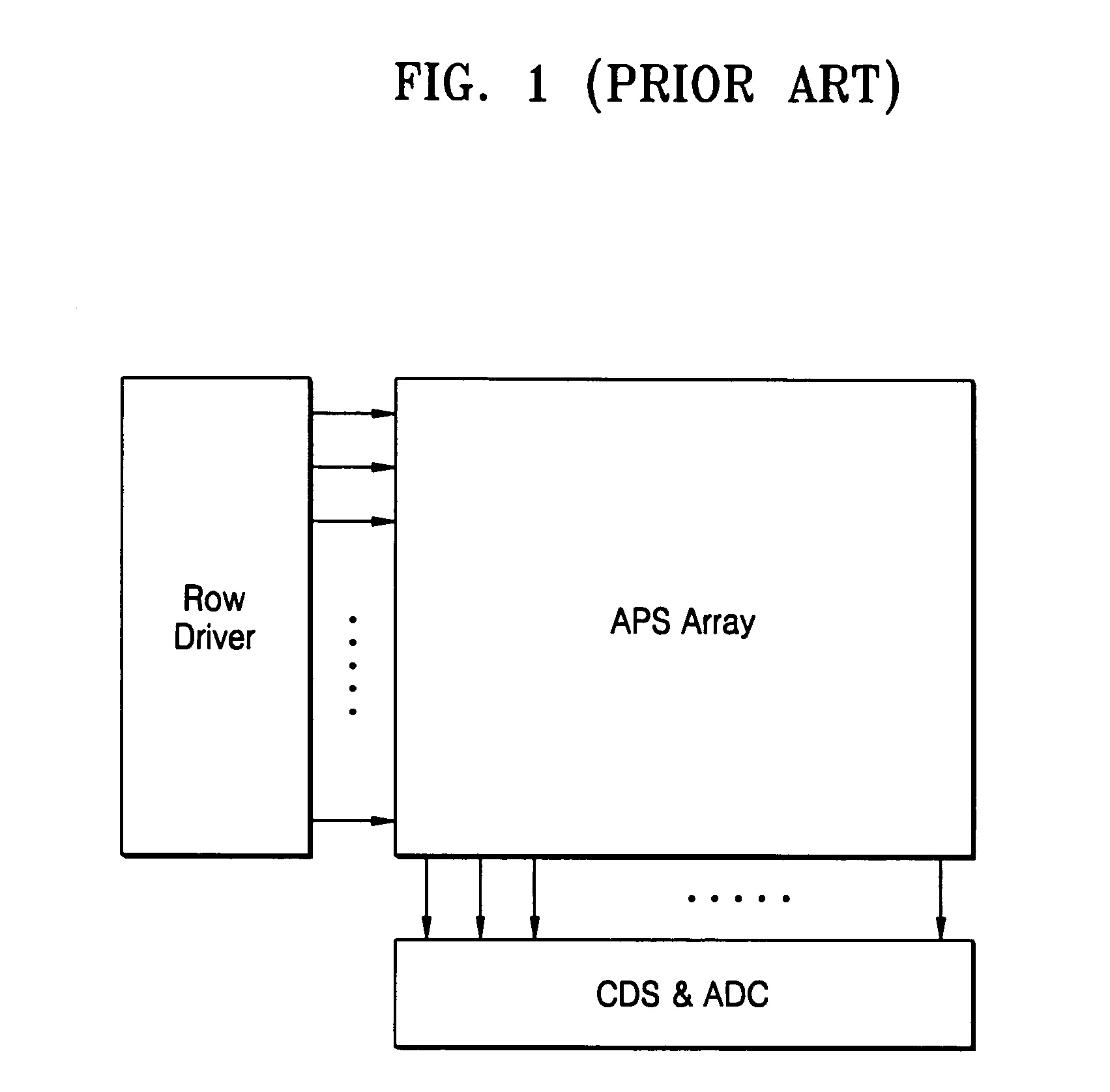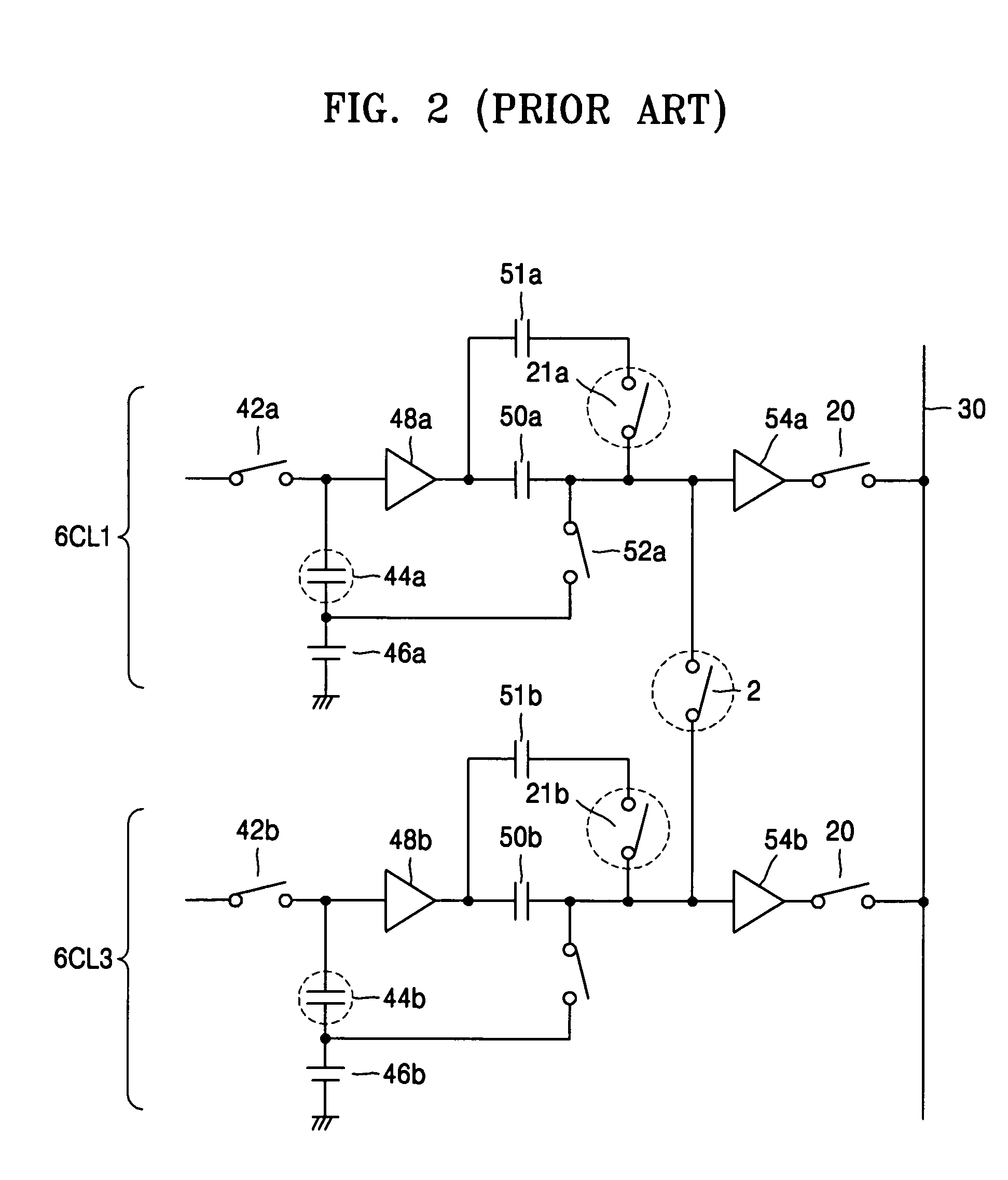Method and circuit for performing correlated double sub-sampling (CDSS) of pixels in an active pixel sensor (APS) array
a technology of active pixel sensor and subsampling method, which is applied in the field of image sensors, can solve the problems of ccd sensor, comparatively high energy consumption, and inability to sustain high-speed operation, and achieve the effect of reducing the error rate of the output signal, reducing the efficiency of the aps, and reducing the aps
- Summary
- Abstract
- Description
- Claims
- Application Information
AI Technical Summary
Benefits of technology
Problems solved by technology
Method used
Image
Examples
Embodiment Construction
[0041]FIG. 3 is a block diagram illustrating a CMOS image sensor (CIS) unit, including an active pixel sensor (APS) array, and an Averaging & Comparing circuit for performing Correlated Double Sub-Sampling (CDSS), according to an exemplary embodiment of the present invention. FIG. 4 is a circuit diagram illustrating an exemplary structure of each pixel within the active pixel sensor (APS) array of the CIS of FIG. 3.
[0042] Referring to FIG. 3 and FIG. 4, the active pixel sensor (APS) array may be comprised of a plurality of pixel circuits known in the related art, or preferably, the pixel circuit of FIG. 4, adapted to sequentially output a VR(reset) voltage and a VS(image signal) voltage. Each pixel in the APS array will generally include a photo-electric transducer (e.g., photodiode PD of FIG. 4). The Row Driver circuit is generally known in the related art and is adapted here to sequentially select pairs of odd (1,3 . . . ) and then pairs of even (2,4 . . . ) numbered rows during ...
PUM
 Login to View More
Login to View More Abstract
Description
Claims
Application Information
 Login to View More
Login to View More - R&D
- Intellectual Property
- Life Sciences
- Materials
- Tech Scout
- Unparalleled Data Quality
- Higher Quality Content
- 60% Fewer Hallucinations
Browse by: Latest US Patents, China's latest patents, Technical Efficacy Thesaurus, Application Domain, Technology Topic, Popular Technical Reports.
© 2025 PatSnap. All rights reserved.Legal|Privacy policy|Modern Slavery Act Transparency Statement|Sitemap|About US| Contact US: help@patsnap.com



